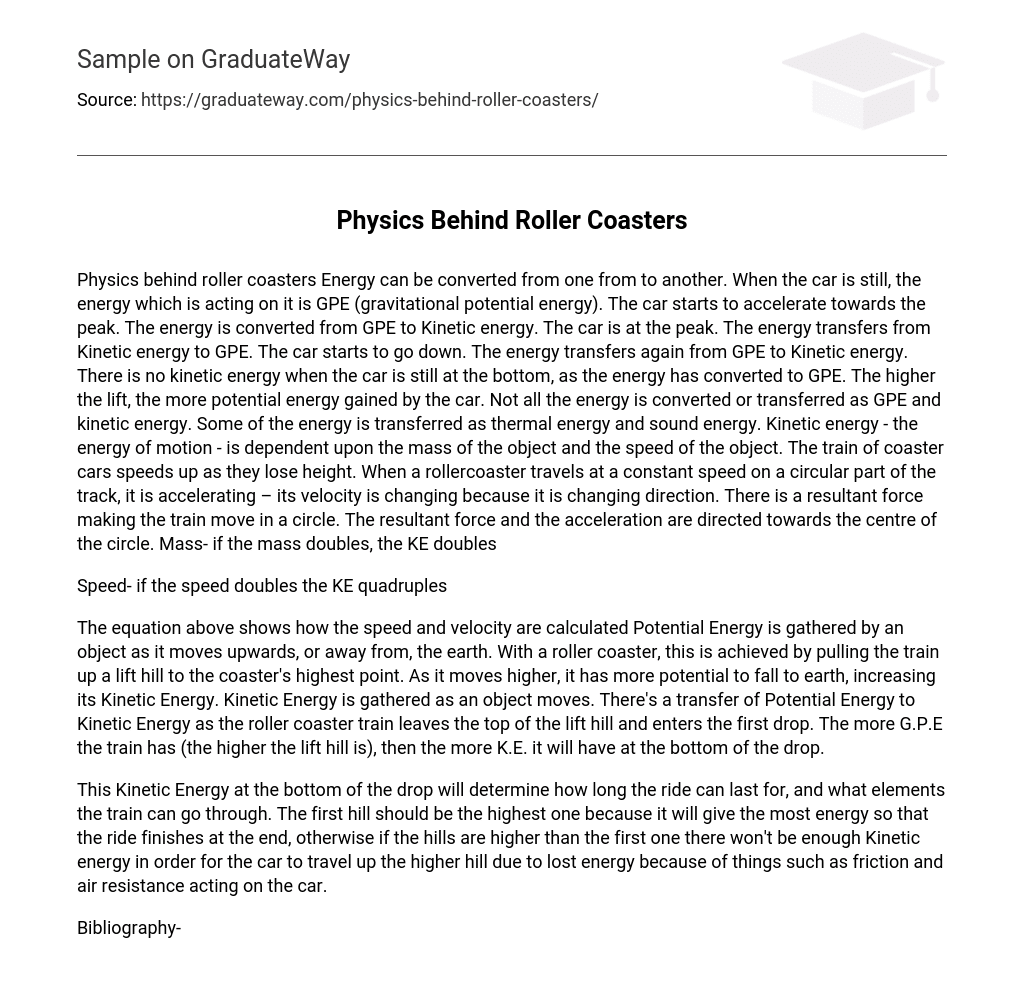Physics behind roller coasters Energy can be converted from one from to another. When the car is still, the energy which is acting on it is GPE (gravitational potential energy). The car starts to accelerate towards the peak. The energy is converted from GPE to Kinetic energy. The car is at the peak. The energy transfers from Kinetic energy to GPE. The car starts to go down. The energy transfers again from GPE to Kinetic energy. There is no kinetic energy when the car is still at the bottom, as the energy has converted to GPE. The higher the lift, the more potential energy gained by the car. Not all the energy is converted or transferred as GPE and kinetic energy. Some of the energy is transferred as thermal energy and sound energy. Kinetic energy – the energy of motion – is dependent upon the mass of the object and the speed of the object. The train of coaster cars speeds up as they lose height. When a rollercoaster travels at a constant speed on a circular part of the track, it is accelerating – its velocity is changing because it is changing direction. There is a resultant force making the train move in a circle. The resultant force and the acceleration are directed towards the centre of the circle. Mass- if the mass doubles, the KE doubles
Speed- if the speed doubles the KE quadruples
The equation above shows how the speed and velocity are calculated Potential Energy is gathered by an object as it moves upwards, or away from, the earth. With a roller coaster, this is achieved by pulling the train up a lift hill to the coaster’s highest point. As it moves higher, it has more potential to fall to earth, increasing its Kinetic Energy. Kinetic Energy is gathered as an object moves. There’s a transfer of Potential Energy to Kinetic Energy as the roller coaster train leaves the top of the lift hill and enters the first drop. The more G.P.E the train has (the higher the lift hill is), then the more K.E. it will have at the bottom of the drop.
This Kinetic Energy at the bottom of the drop will determine how long the ride can last for, and what elements the train can go through. The first hill should be the highest one because it will give the most energy so that the ride finishes at the end, otherwise if the hills are higher than the first one there won’t be enough Kinetic energy in order for the car to travel up the higher hill due to lost energy because of things such as friction and air resistance acting on the car.
Bibliography-





